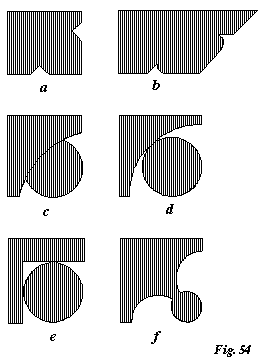DECORATION XXII. THE ANGLE 315
angle is one of the very best ever invented. By enlarging and deepening the incision, we get in succession the forms b, c, d; and by describing a small equal are on each of the sloping lines of these figures, we get e, f, g, h.
§ 10. I do not know whether these mouldings are called by architects chamfers or beads; but I think bead a bad word for a continuous moulding, and the proper sense of the word chamfer is fixed by Spenser as descriptive not merely of truncation, but of trench or furrow:-
“The gin you, fond flies, the cold to scorn,
And, crowing in pipes made of green corn,
You thinken to be lords of the year;
But eft, when ye count you freed from fear,
Comes the breme winter with chamfred brows,
Full of wrinkles and frosty furrows.”1
So I shall call the above mouldings beaded chamfers, when there is any chance of 
§ 11. Of those above given, b is the constant chamfer of Venice, and a of Verona; a being the grandest and best, and having a peculiar precision and quaintness of effect about it. I found it twice in Venice, used on the sharp angle, as at a and b, Fig. 54, a being from the angle of a house on the Rio San Zulian, and b from the windows of the church of San Stefano.
§ 12. There is, however, evidently another variety of the chamfers, f and g, Fig. 53, formed by an unbroken curve instead of two curves, as c, Fig. 54; and when this, or the
1 [The Shepheards Calender: “Februarie.” Ruskin modernises the spelling.]
[Version 0.04: March 2008]